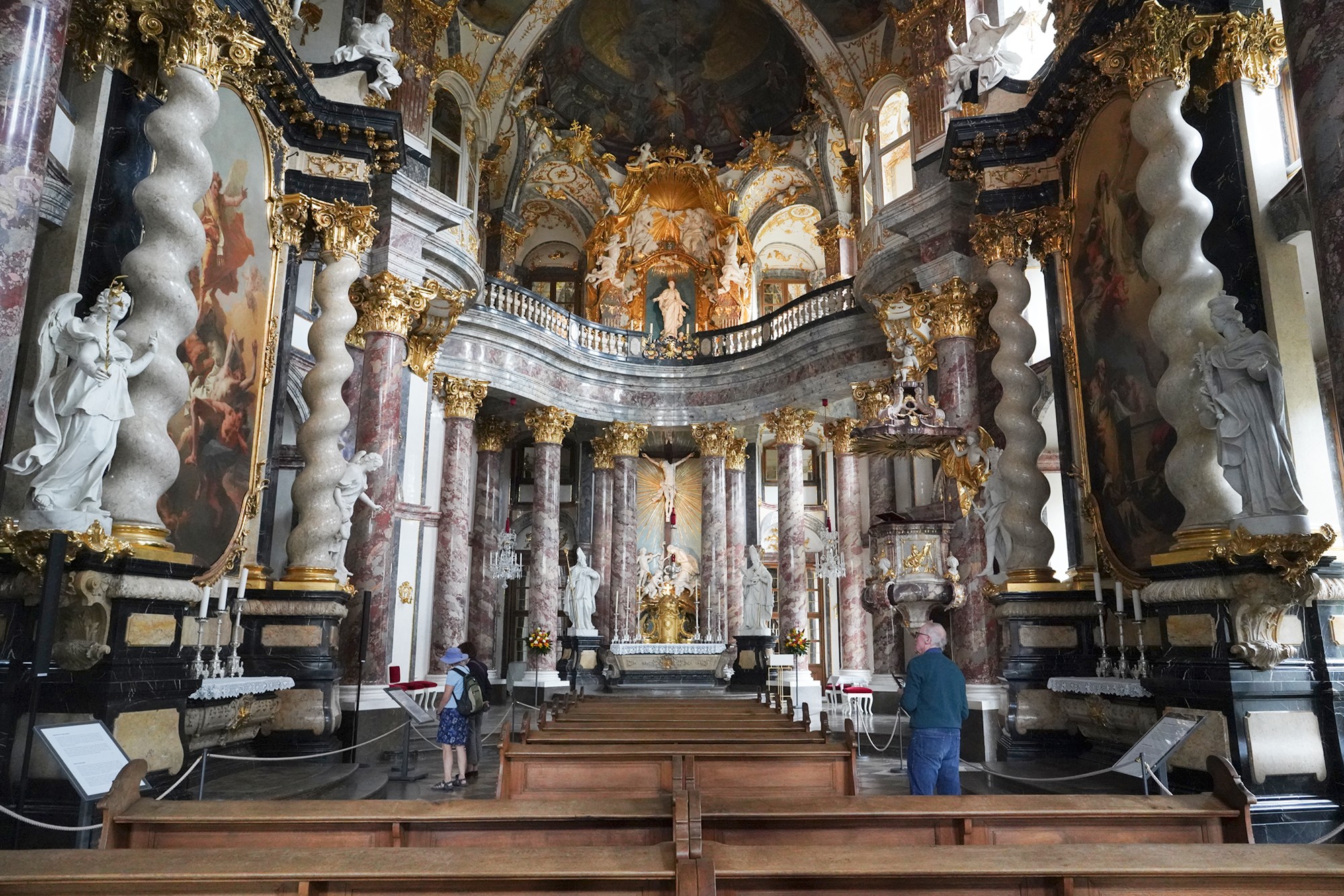Würzburg Day Trip from Rothenburg, Germany
Würzburg is a charming city in northern Bavaria, Germany, renowned for its stunning architecture, rich history, and vibrant wine culture. 921
Würzburg City Hall: Rückermainstraße 2, 97070 Würzburg, Germany
Old Main Bridge: Alte Mainbrücke, 97070 Würzburg, Germany
St Mary’s Chapel: Marktpl. 7, 97070 Würzburg, Germany
Marienberg Fortress: Marienberg, 97012 Würzburg, Germany
Würzburg Residence: Residenzpl. 2, 97070 Würzburg, Germany
Date Picture Taken: May, 2024
Situated on the banks of the Main River, it serves as a gateway to the Franconian wine region. It is often the starting point of the Romantic Road, a popular tourist route in Germany.
I took two trains from Rothenburg to Wurzburg, which took about two hours, and then a tram from the train station to the city center.

Far away in the picture is the Wurzburg Cathedral

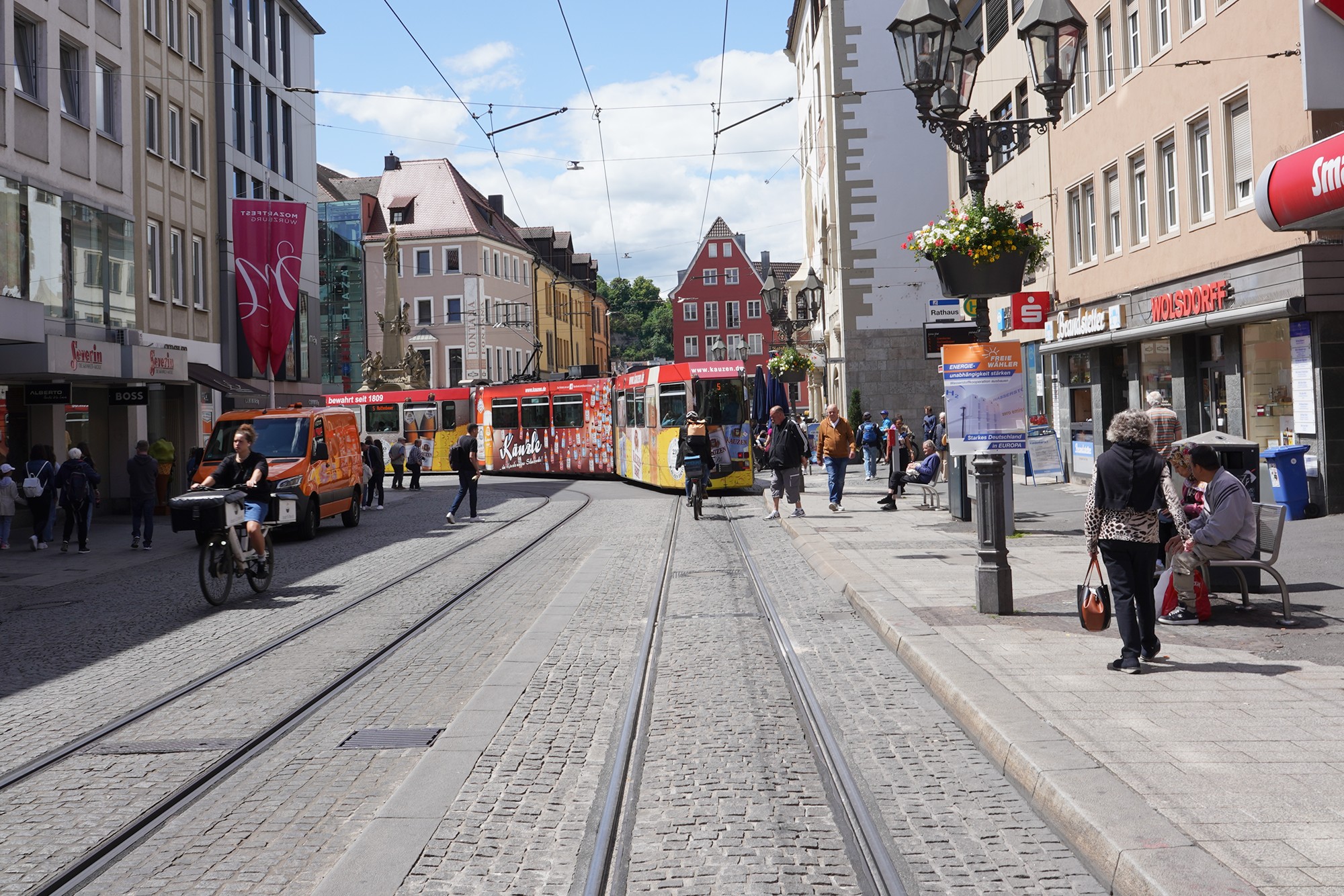







Near the city center is this Old Main Bridge, which crosses the Main River. On the hill is the Marienberg Fortress, which I will visit later.

Built in the 12th century, this picturesque bridge is adorned with statues of saints and offers beautiful views of the river and the city. It’s a popular spot for a leisurely stroll and often features street musicians and local vendors.


But for now, I turned back and returned to the city center.

The Grafeneckart is one of the oldest and most historically significant buildings in Würzburg, Germany. Located in the heart of the city, it is part of the Würzburg Town Hall complex and has served various purposes over the centuries.
The Grafeneckart dates back to the 13th century and originally served as a fortification and part of the city’s defenses. It is one of the oldest surviving parts of the town hall.
One of the most striking features of the Grafeneckart is its tower, which is topped with a clock. The tower has long been a symbol of civic pride in Würzburg and offers great views over the city.



The Grafeneckart is located on the Rathausplatz, the square in front of the town hall, which is a central spot in Würzburg. This area is often used for public events and markets.



The heart of the city, the Market Square is where you’ll find the Marienkapelle, a Gothic chapel with a striking red and white exterior. The square is a lively area with shops, cafes, and often hosts local markets.

The Marienkapelle is a prime example of Gothic architecture, characterized by its pointed arches, ribbed vaults, and ornate decorations. The chapel was constructed between 1377 and 1480.





I walked toward the bus station where the bus to Marienberg Fortress stops.

The back side




This is the bus stop, and from here, I took the bus and reached the Marienberg Fortress.


The Marienberg Fortress





The side buildings before the gate



The inside area

Fortress Marienberg has a rich history that dates back over a thousand years. It was originally the site of a Celtic refuge, and later, in the 8th century, a church was built there. The fortress itself began to take shape in the 13th century, becoming the residence of the Prince-Bishops of Würzburg.

For nearly five centuries, Fortress Marienberg served as the residence of the Prince-Bishops of Würzburg. It was not only a defensive stronghold but also a center of power and administration for the region.

From the inside area, I walked out to the opposite side

The other side of the Fortress




Another scene on the same side



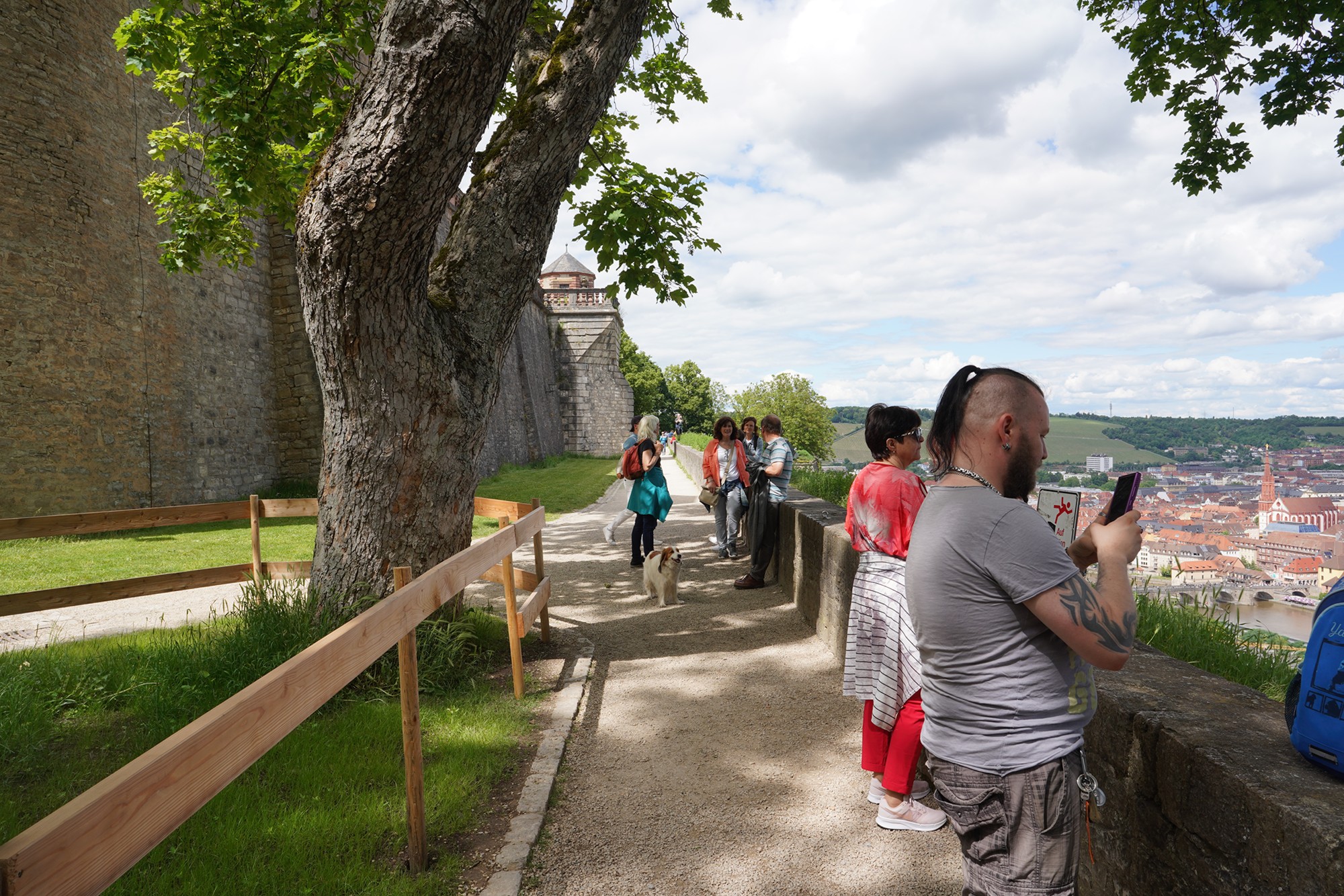
The view of Wurzburg from the fortress


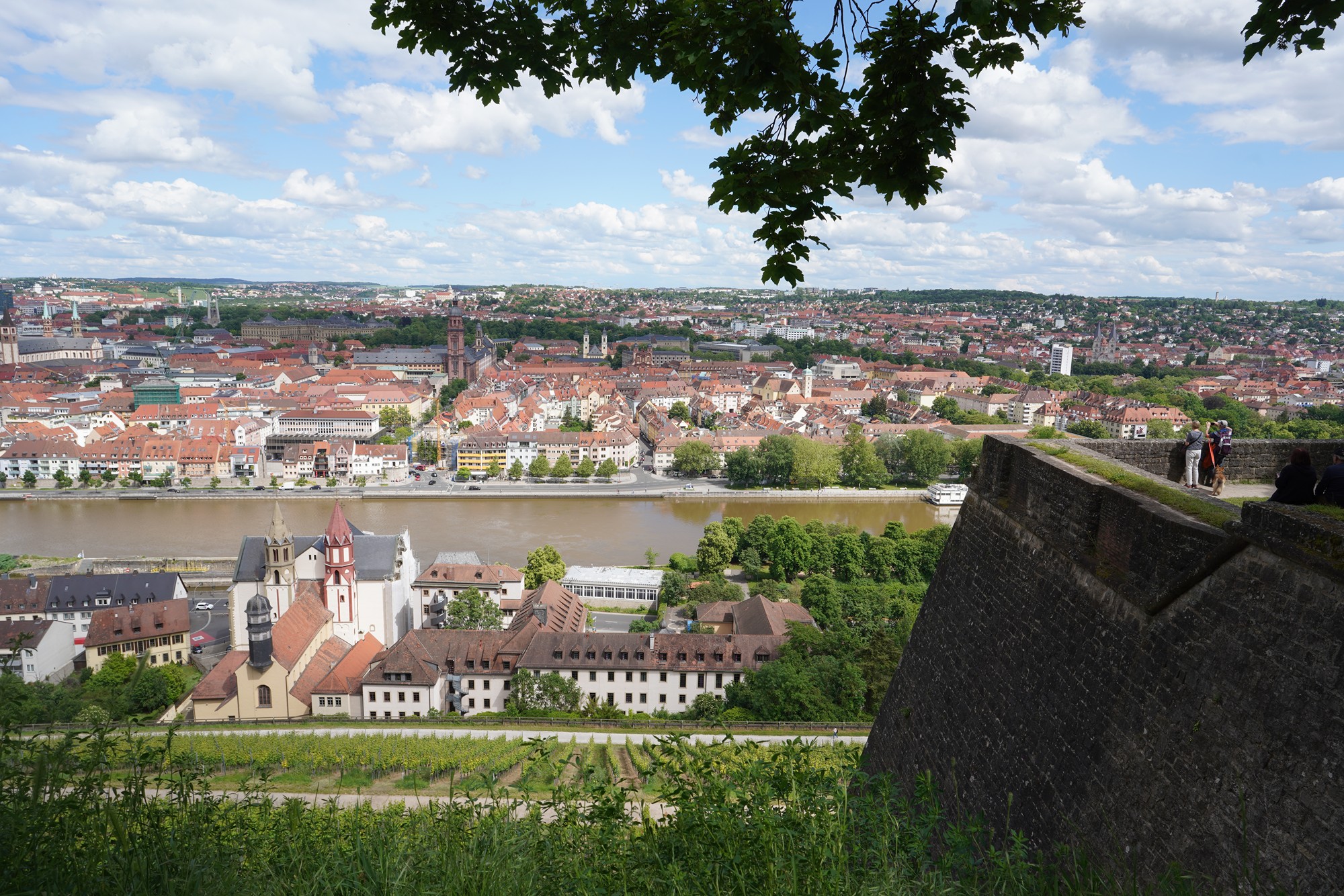

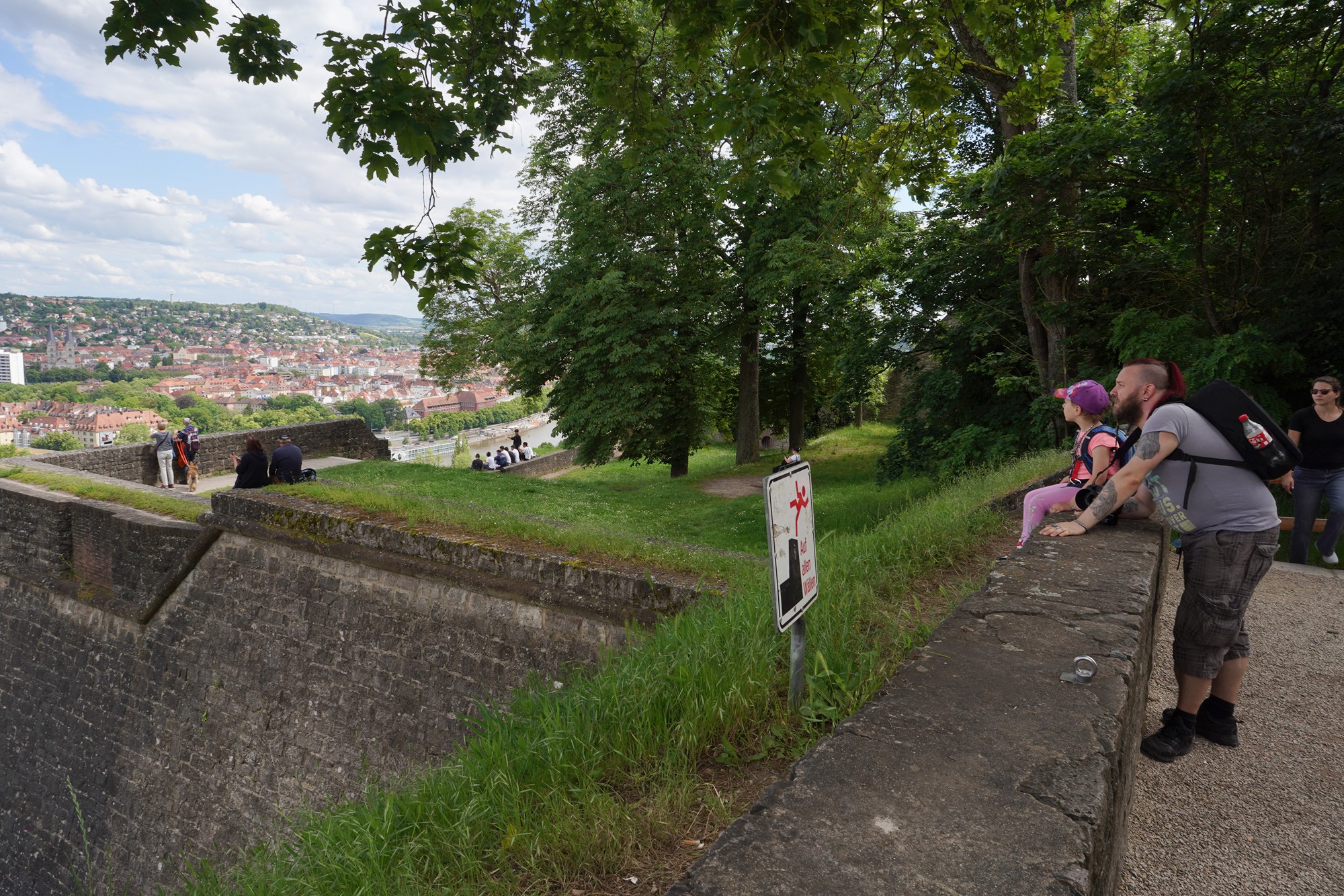
The following side of the fortress

The next side view of the fortress
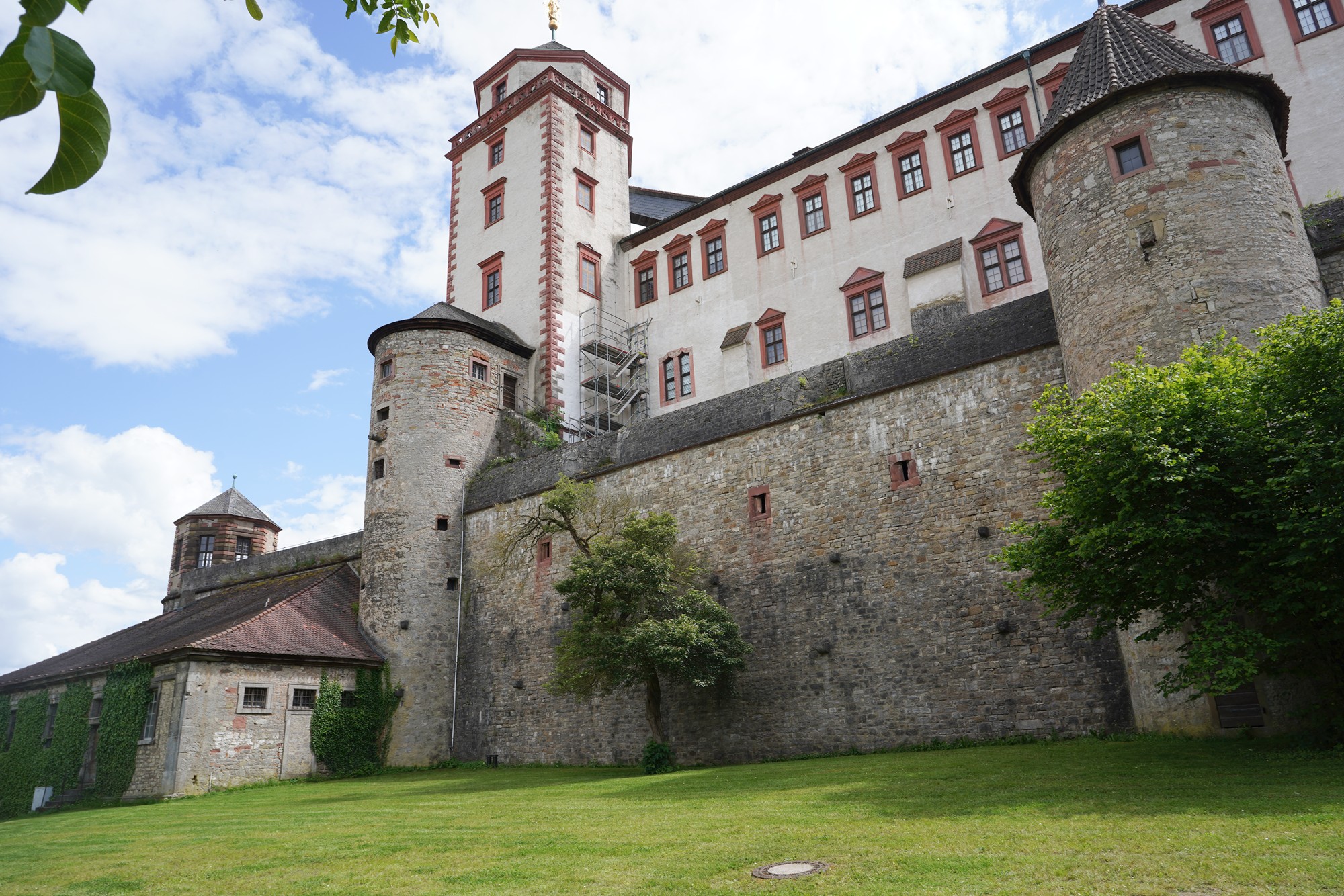


I came back to the starting area


Then exited the fortress
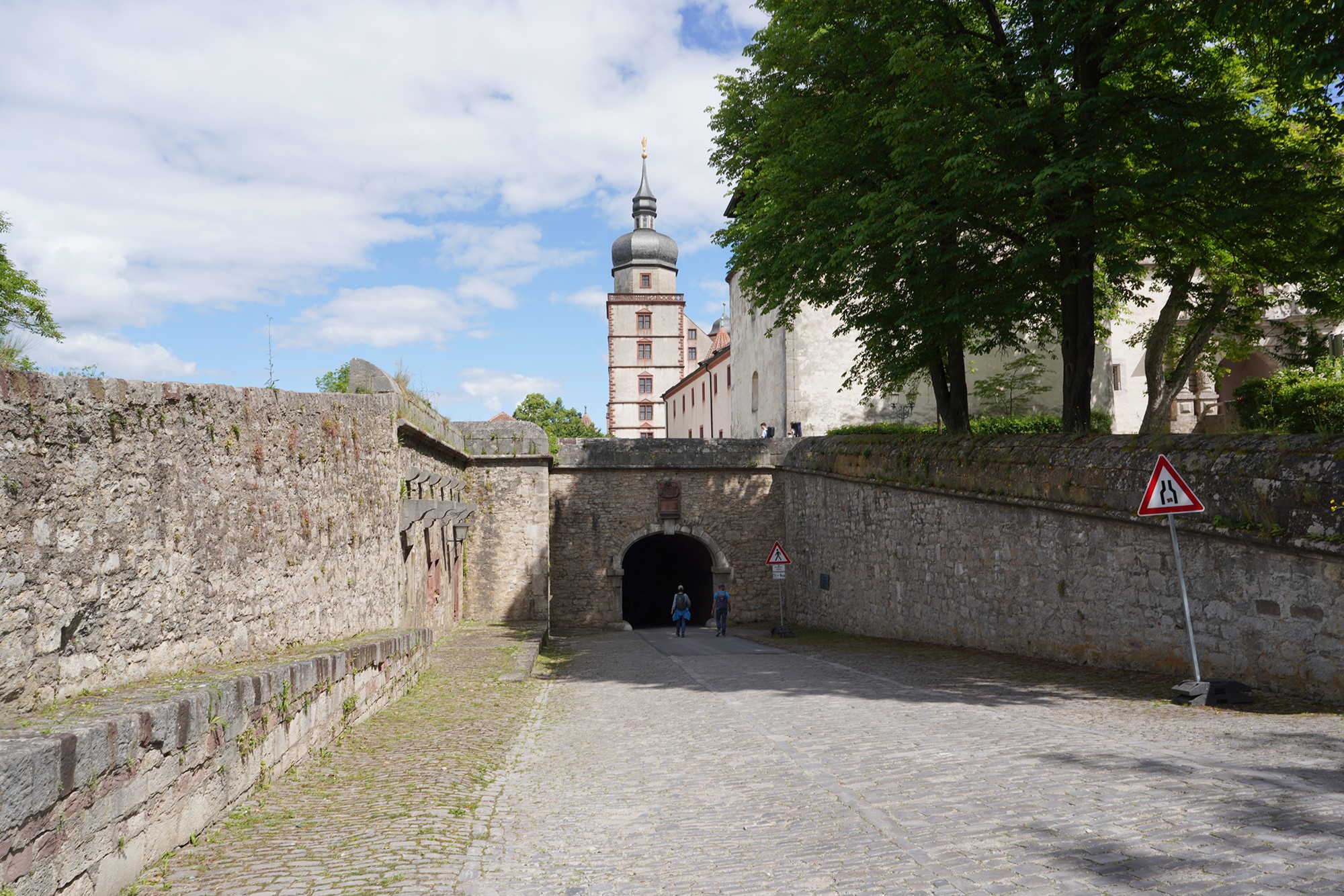
I took another bus and reached the Würzburg Residence.




The Würzburg Residence (Würzburger Residenz) is one of the magnificent Baroque palaces in Europe and a UNESCO World Heritage site.
The Würzburg Residence was constructed between 1720 and 1744 for the Prince-Bishops of Würzburg.
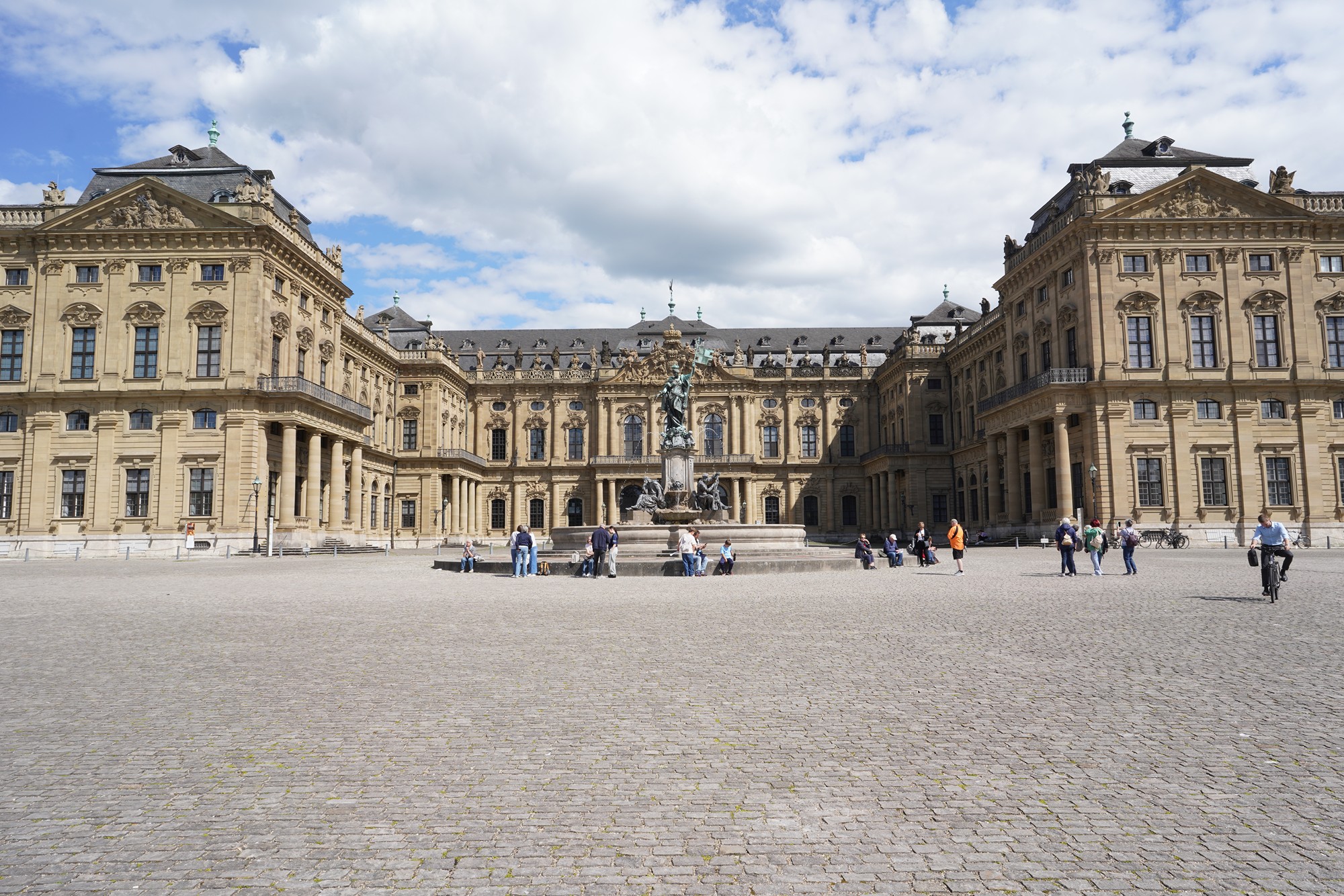
The palace is considered a masterpiece of Baroque architecture, blending French château, Viennese Baroque, and Italian influences.


The Würzburg Residence was not only a royal residence but also a symbol of the power and wealth of the Prince-Bishops of Würzburg. The palace reflects the political and cultural ambitions of the time and remains a key site in understanding the history of the region.




The Würzburg Residence houses the Martin von Wagner Museum, one of the most important art museums in Germany, as well as exhibits related to the palace’s own history and restoration.










Most of the buildings in Wurzburg were destroyed during WWII.



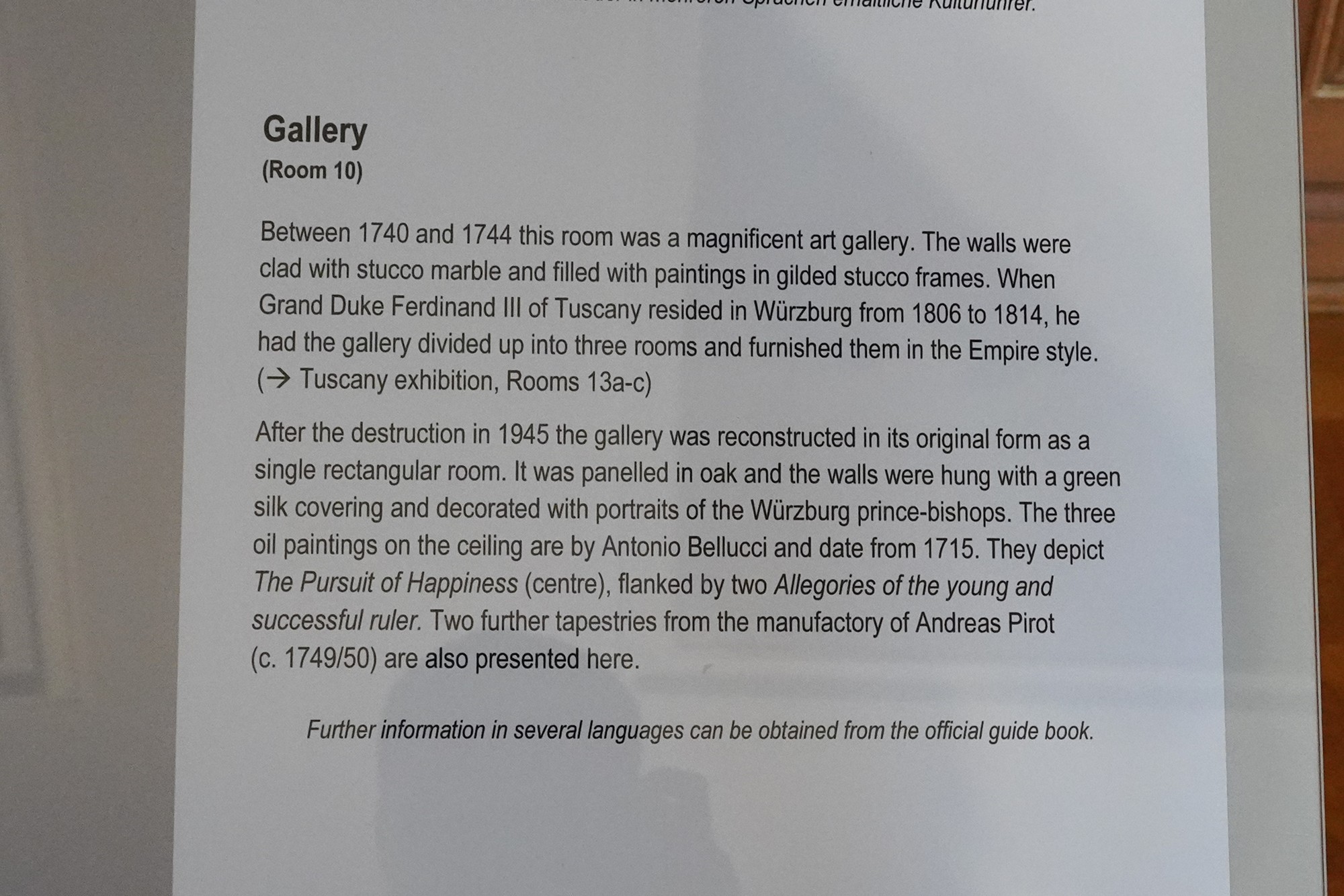

The Mirror Cabinet is one of the most dazzling rooms in the palace, covered with mirrors and intricate gilded stucco. The walls are adorned with delicate paintings, creating a space of extraordinary beauty and craftsmanship. This room, destroyed during World War II, has been meticulously reconstructed to its former glory.










The Kaisersaal (Imperial Hall) is the centerpiece of the Residence’s ceremonial rooms. This opulent hall, with its magnificent ceiling fresco also by Tiepolo, was used for grand receptions and imperial visits. The room is lavishly decorated with stucco work, mirrors, and gilded accents.








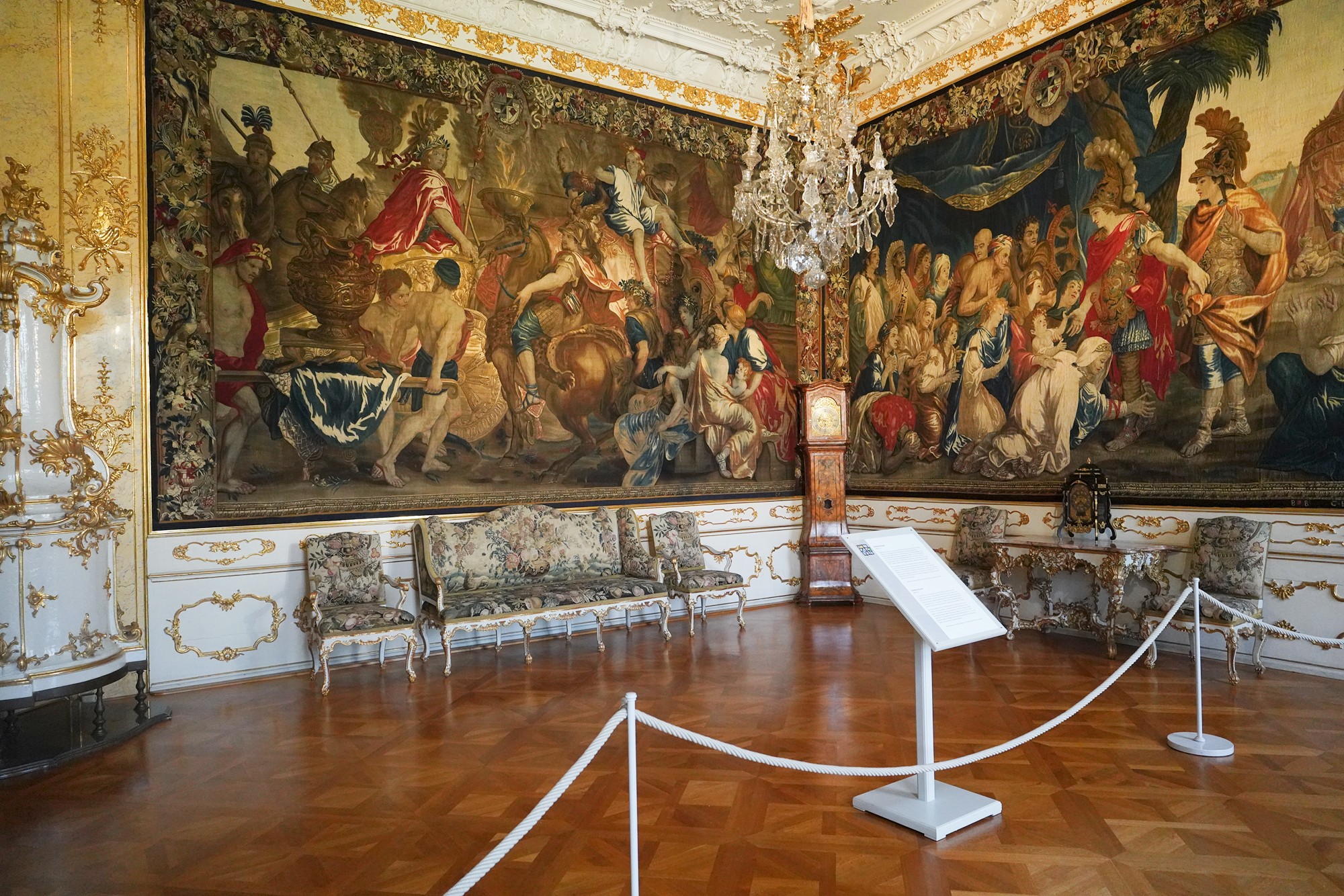









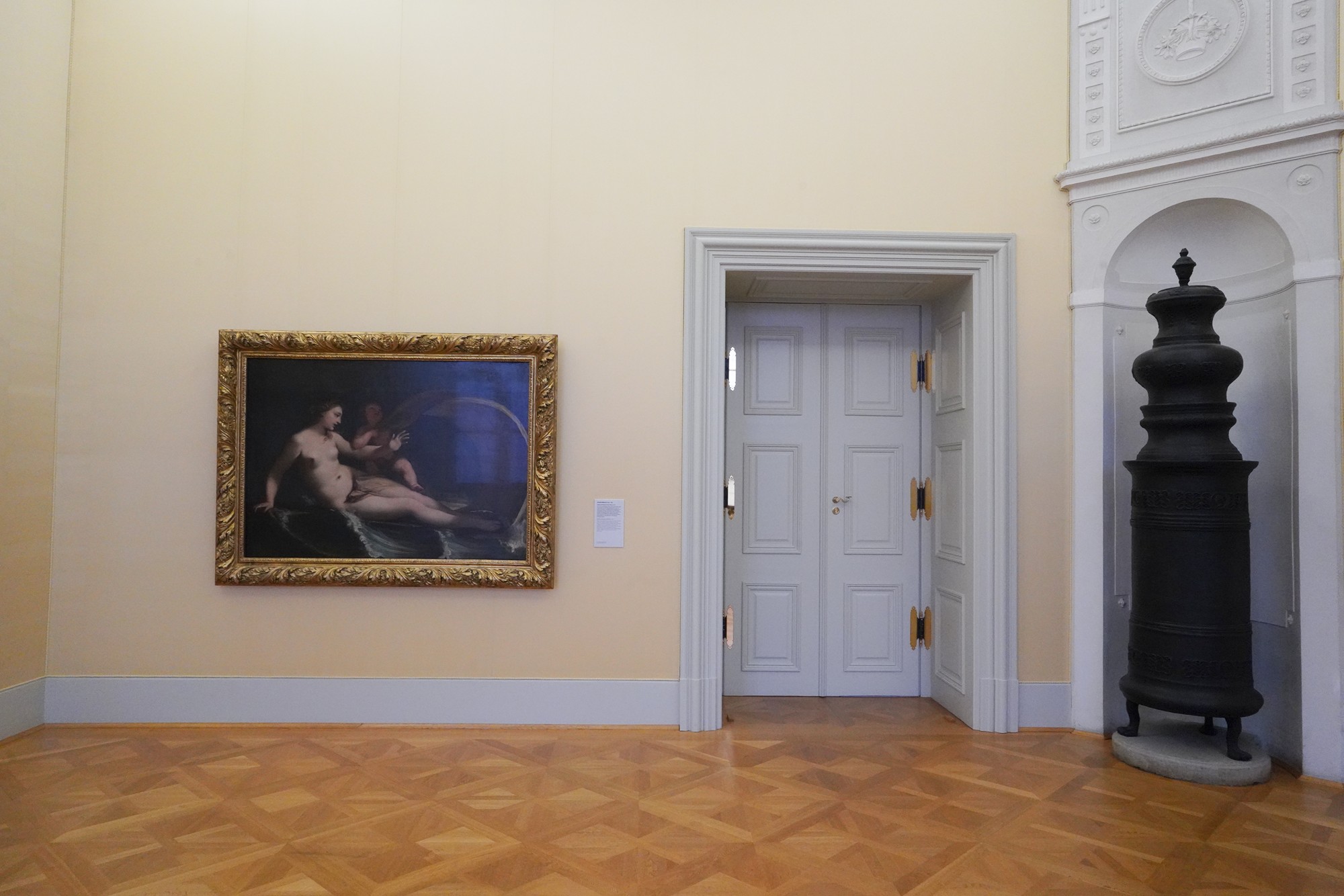
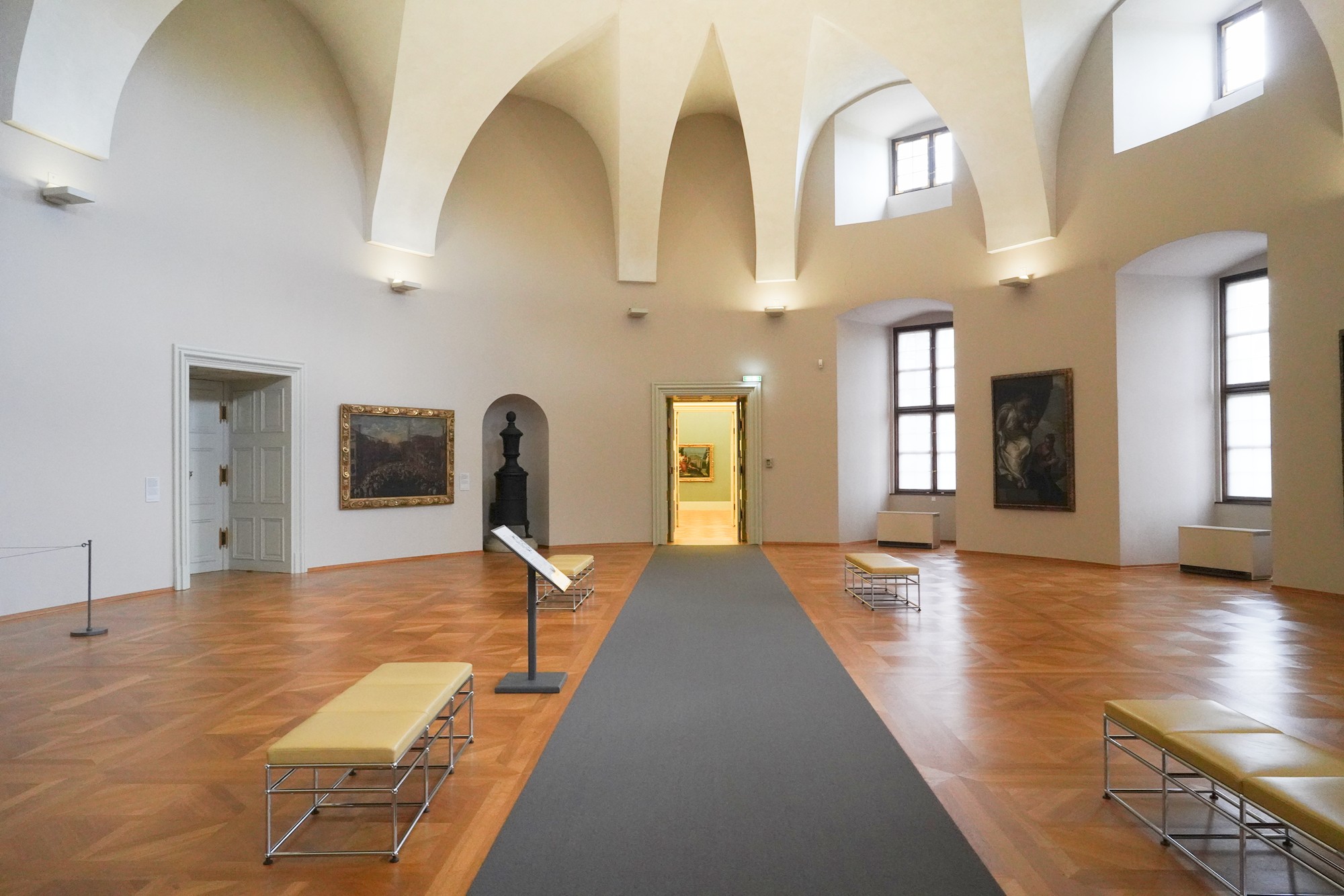



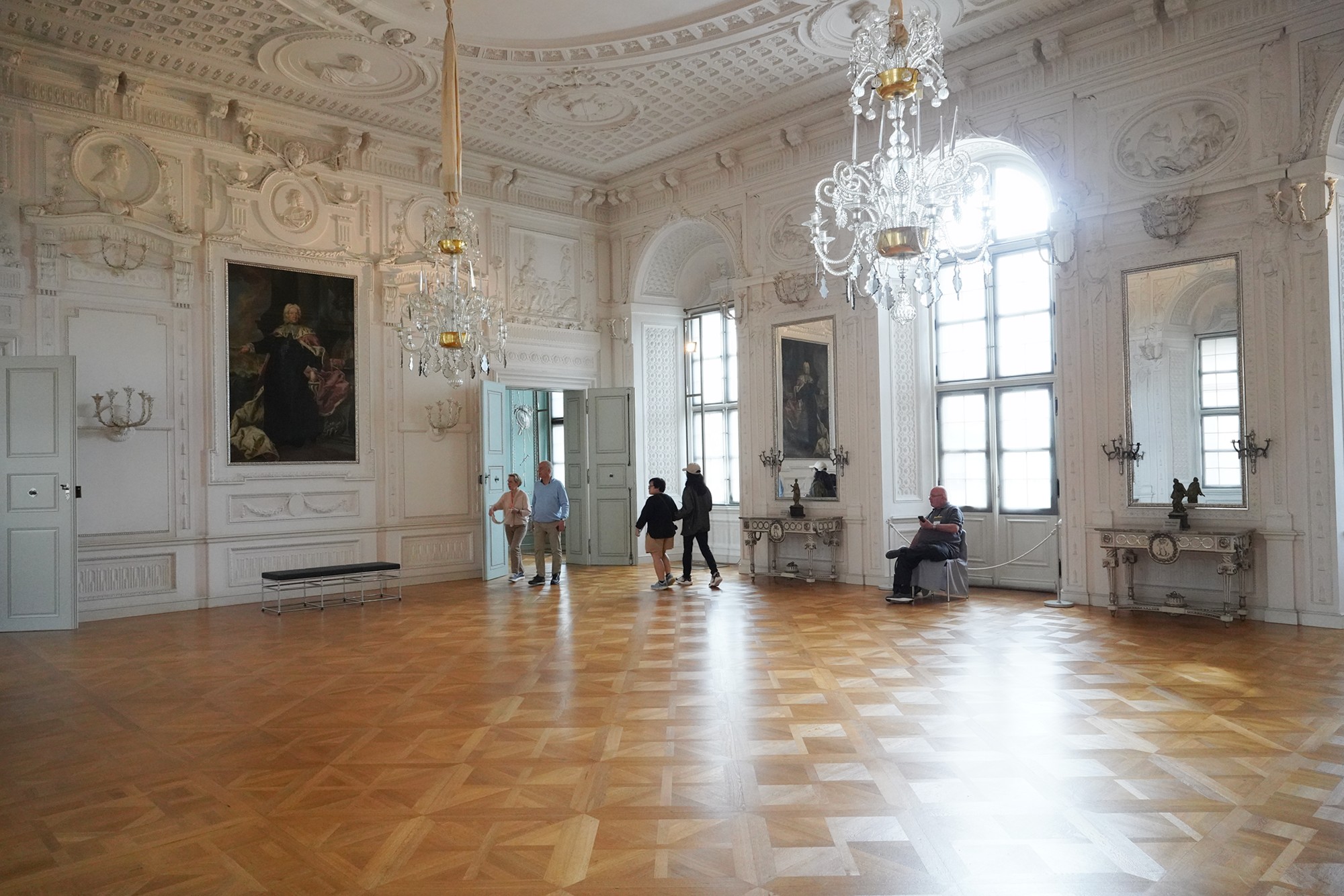







One of the most famous features of the Würzburg Residence is the grand staircase, designed by Balthasar Neumann. The staircase is renowned for its vast unsupported vaulted ceiling, which is adorned with the largest fresco in the world, painted by Giovanni Battista Tiepolo. The fresco depicts the four known continents at the time (Europe, Asia, Africa, and America) in vibrant and intricate detail.
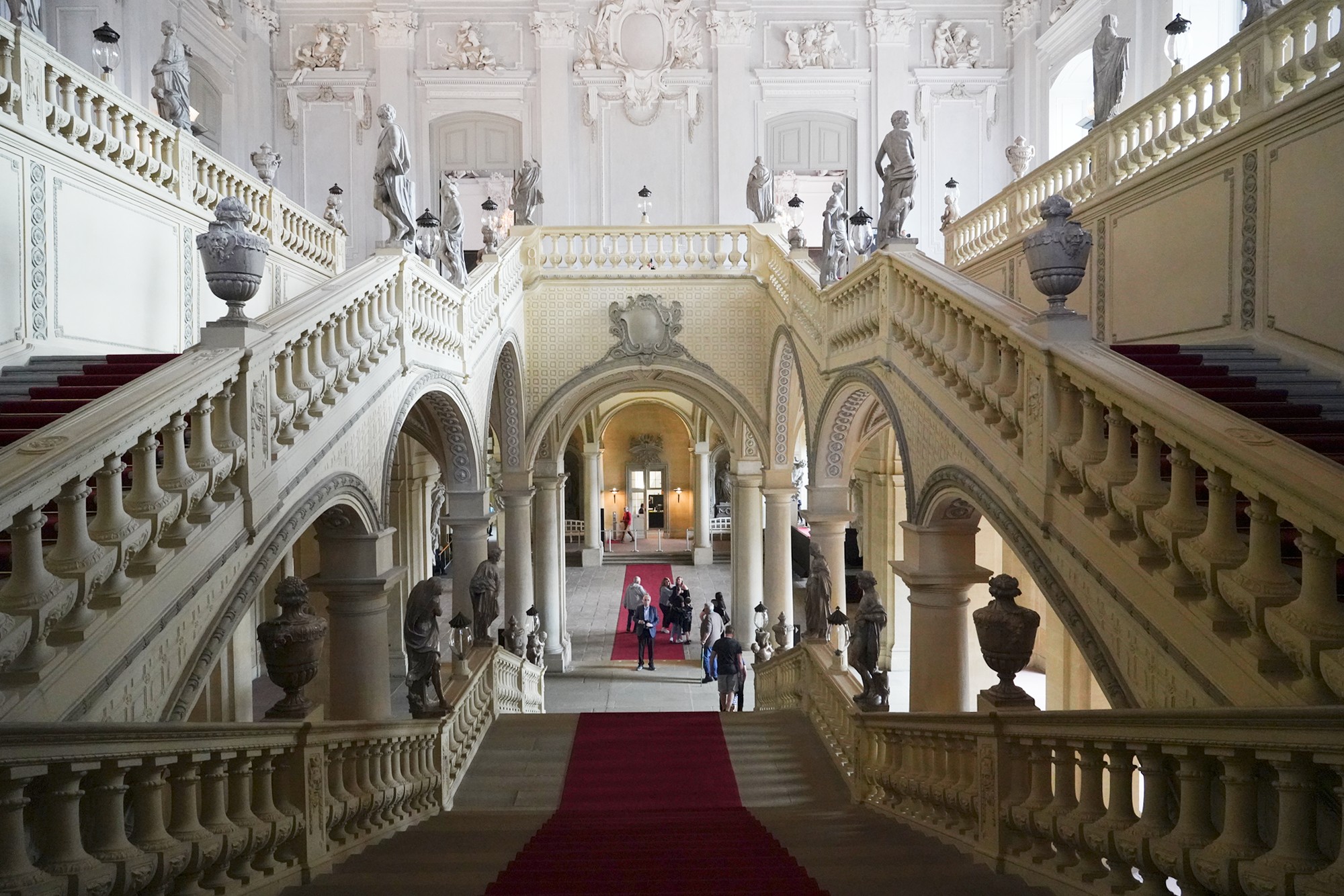




Exited from the main building

In a side building is this chapel
